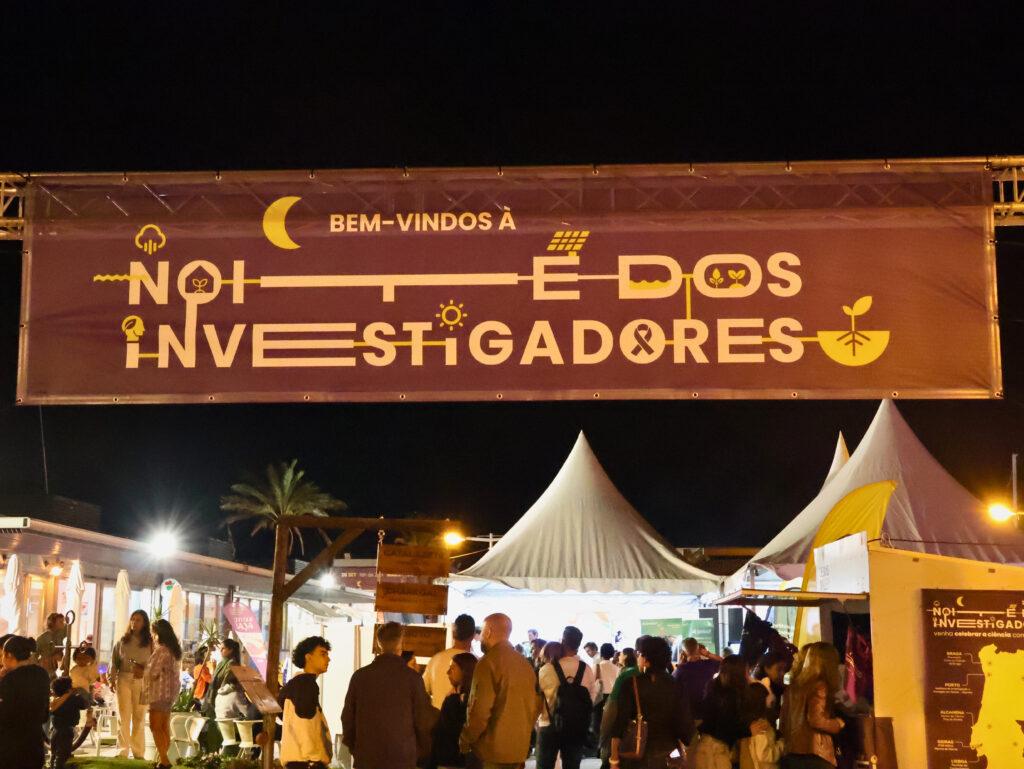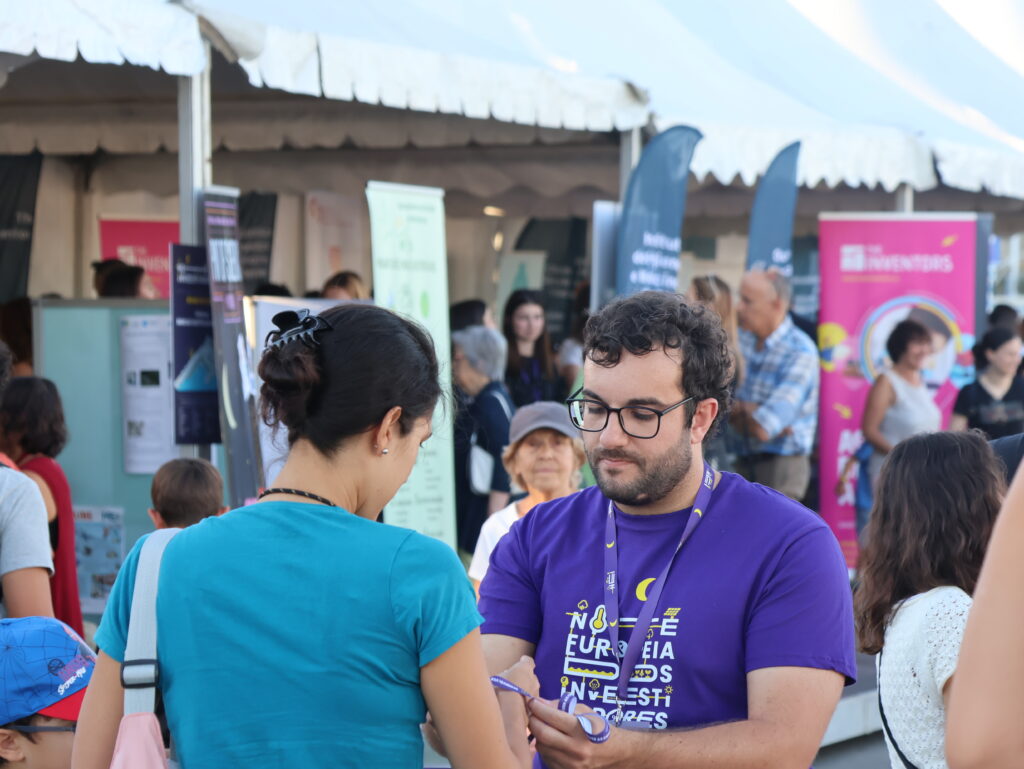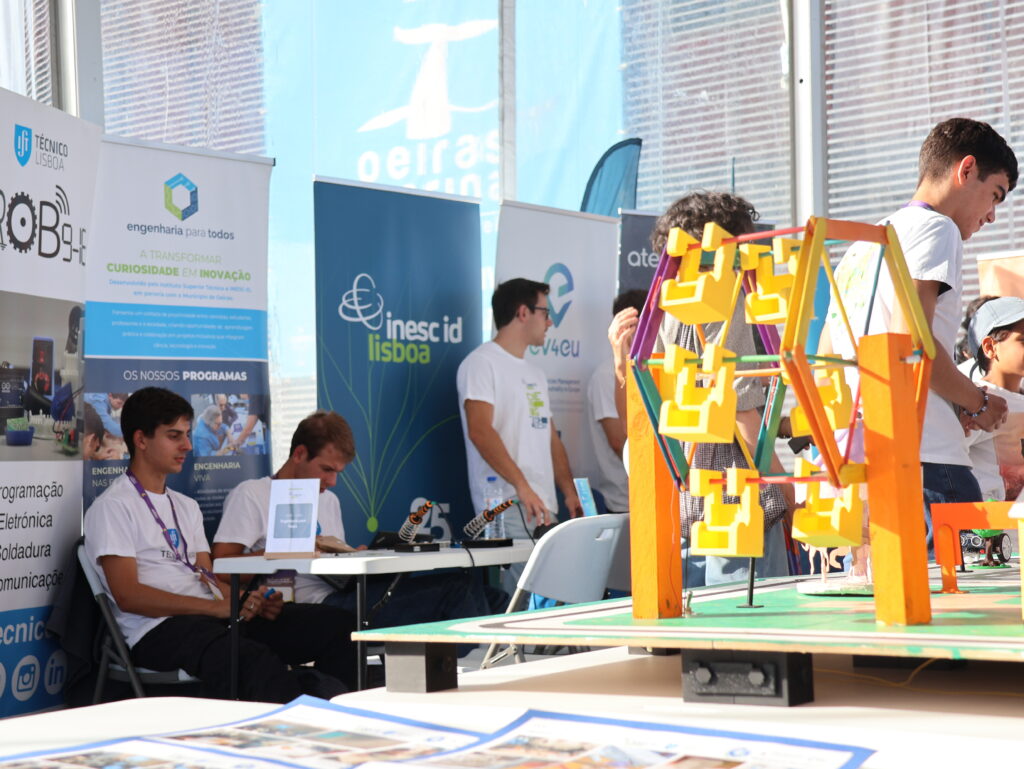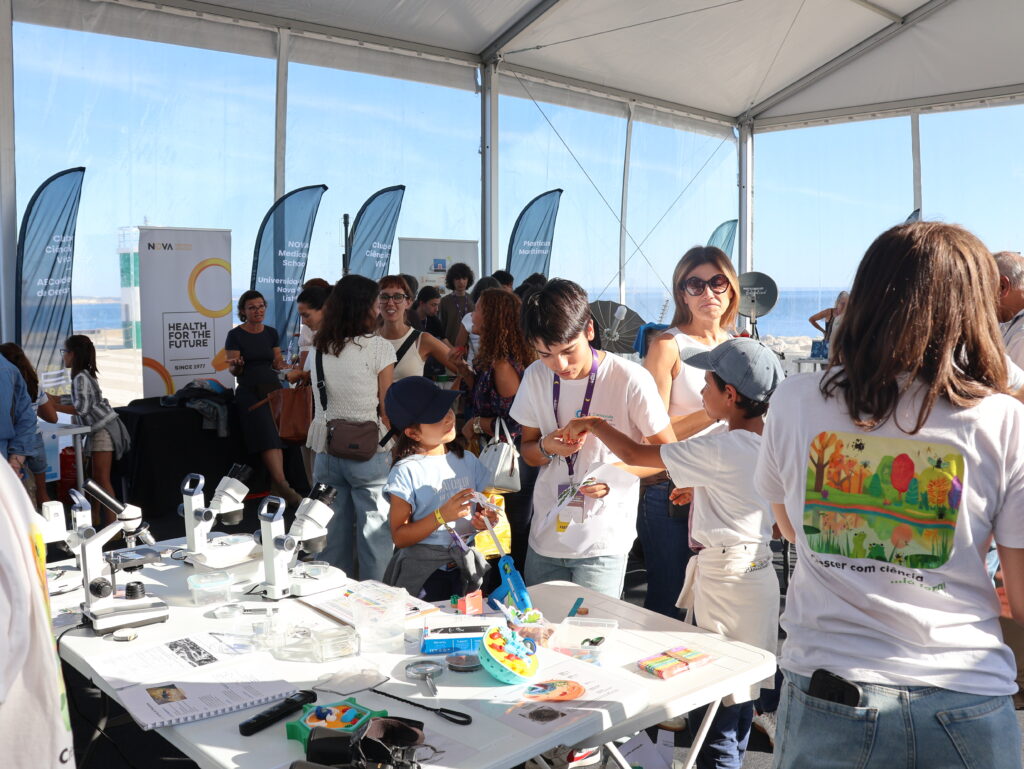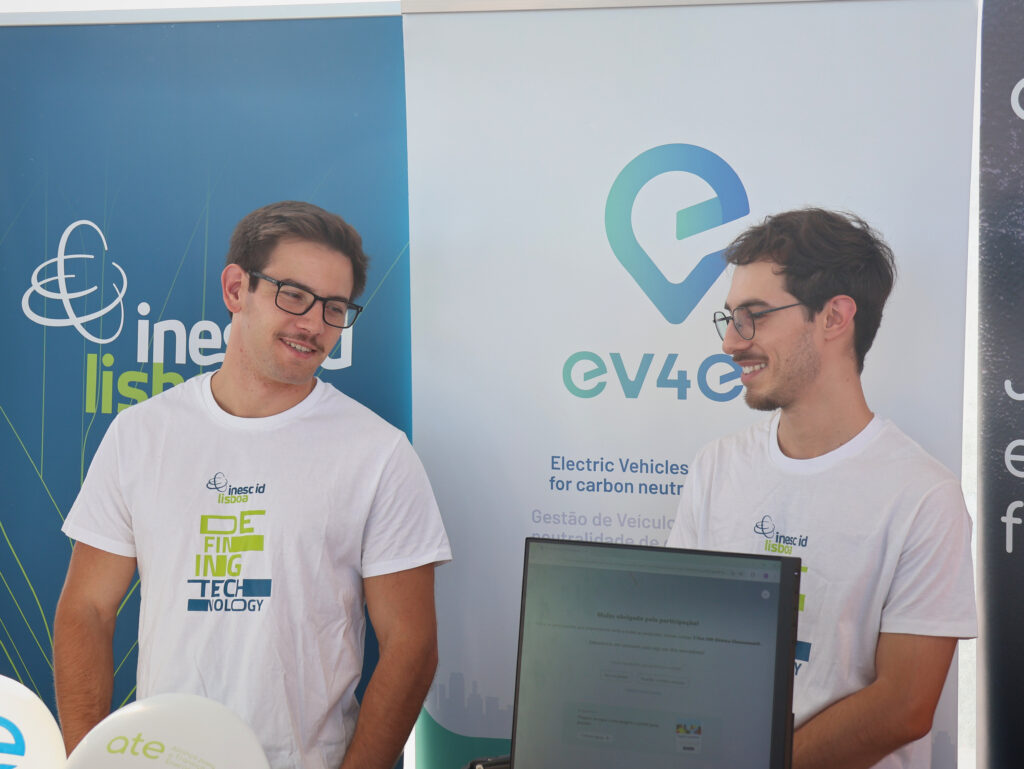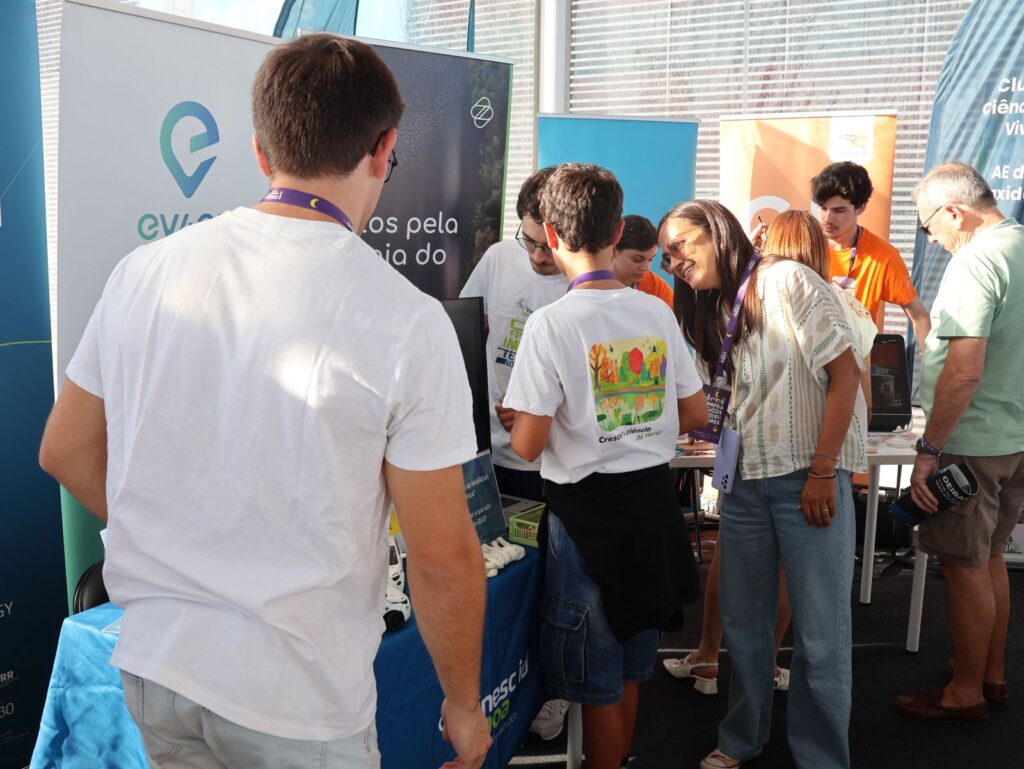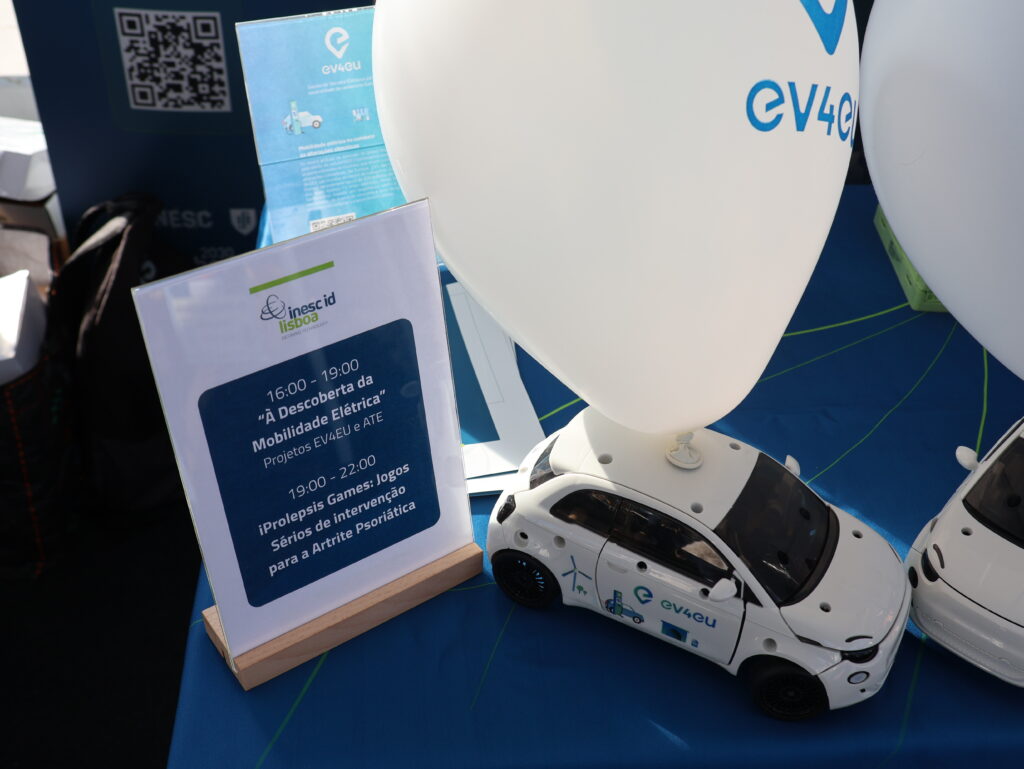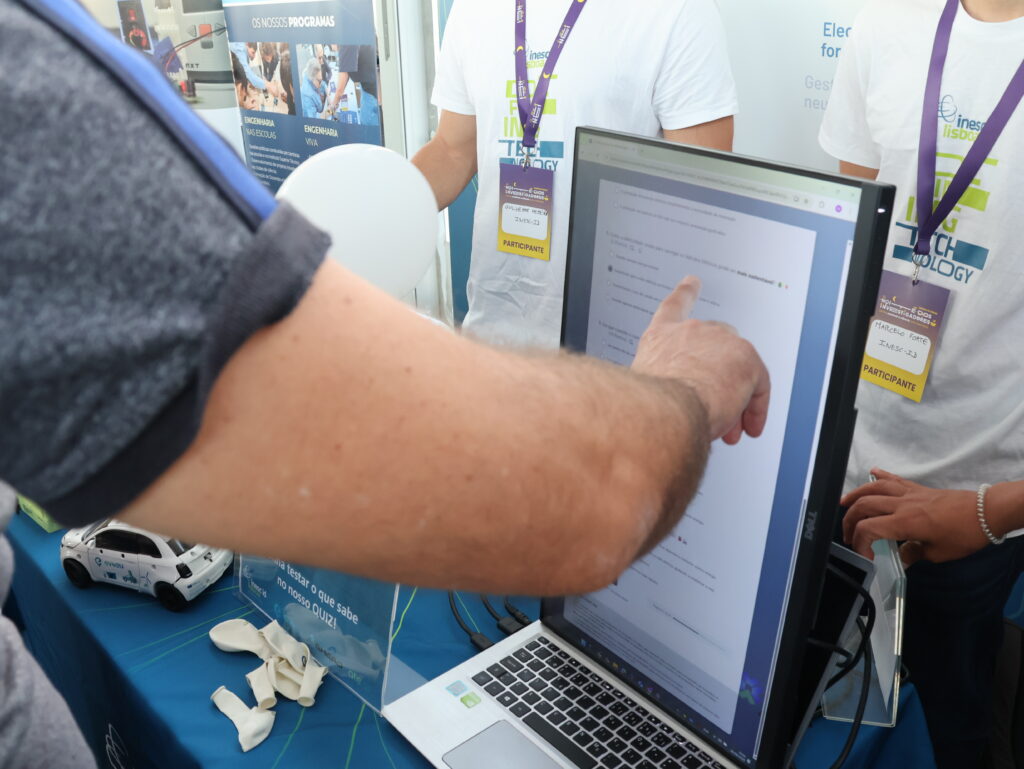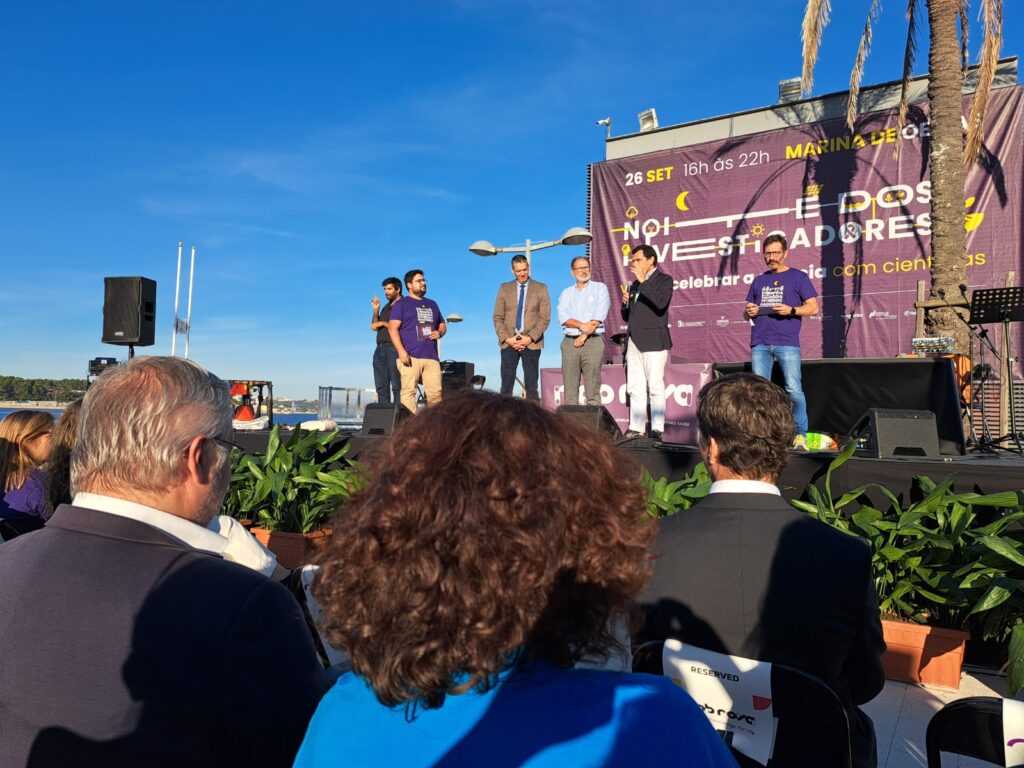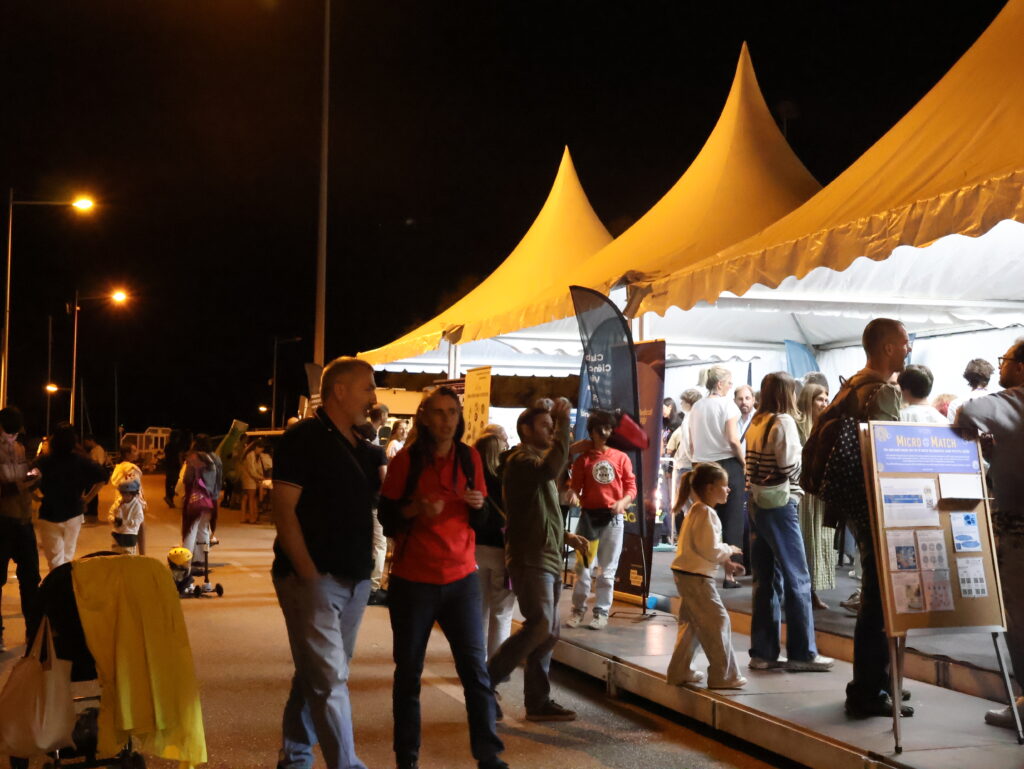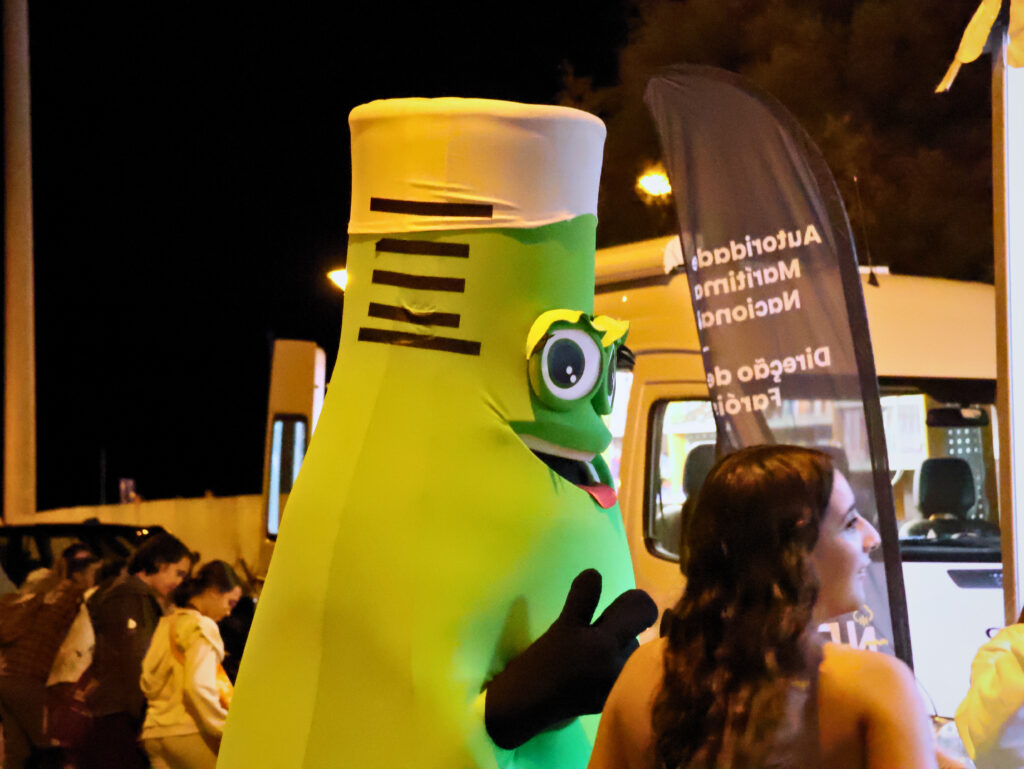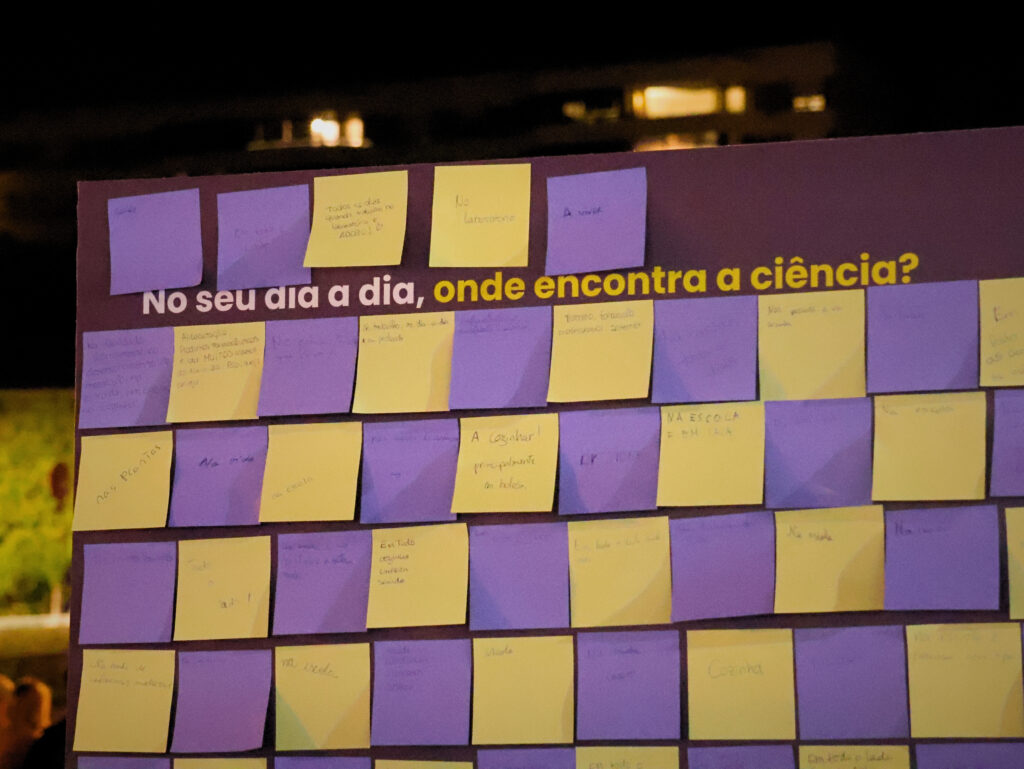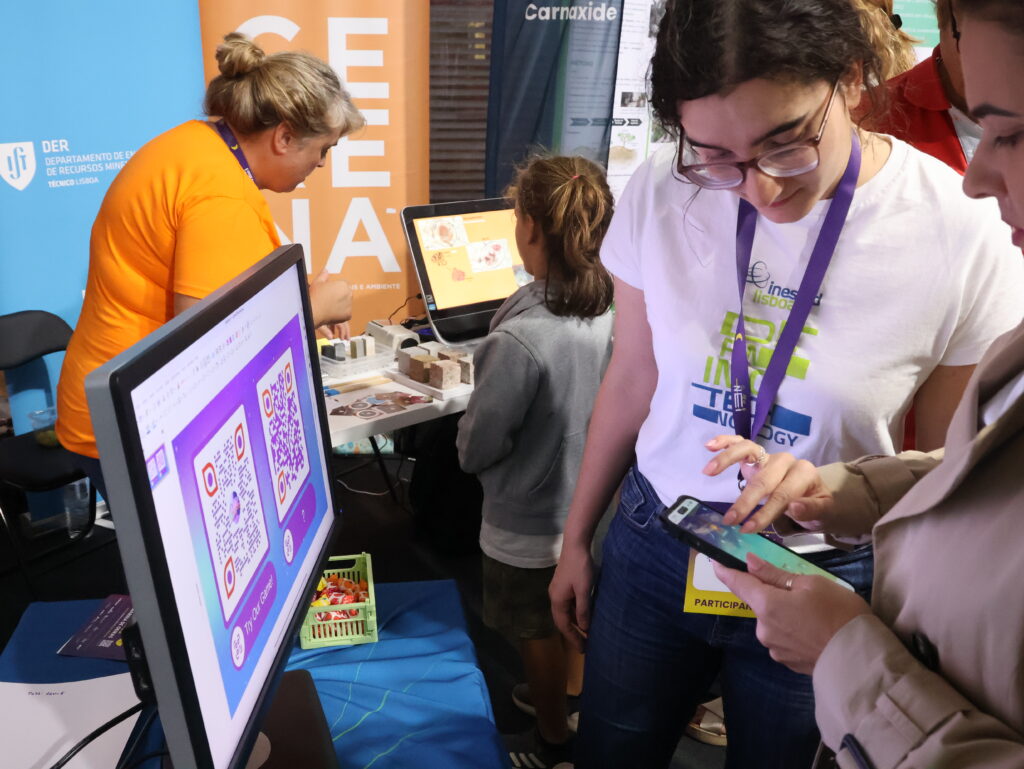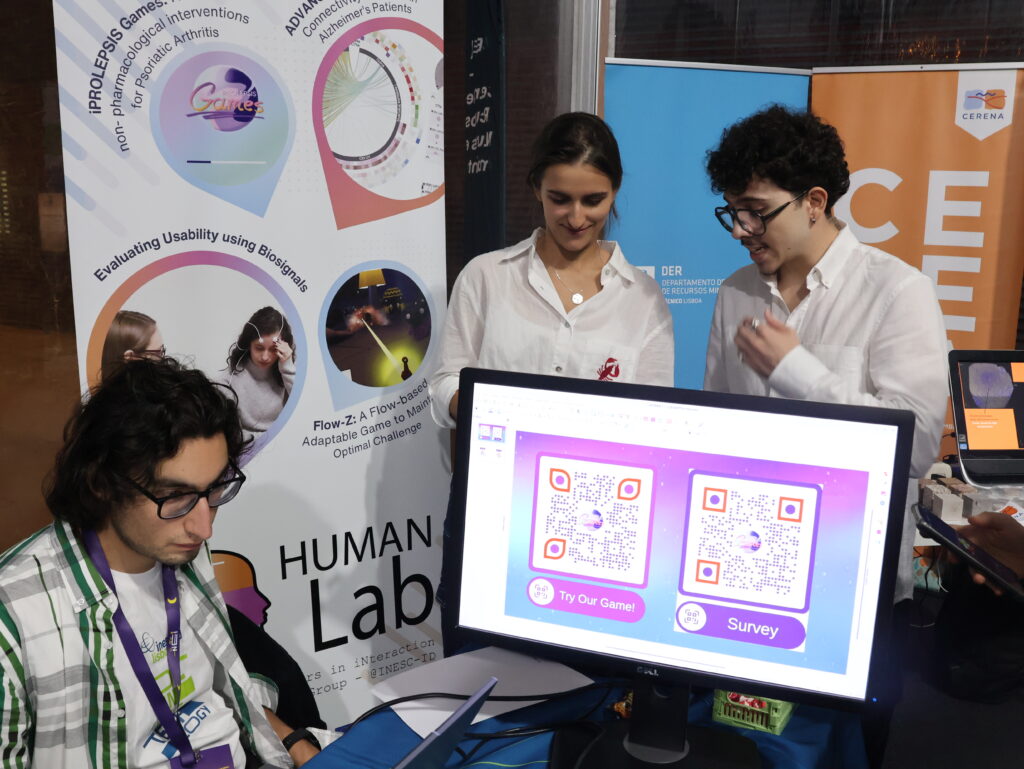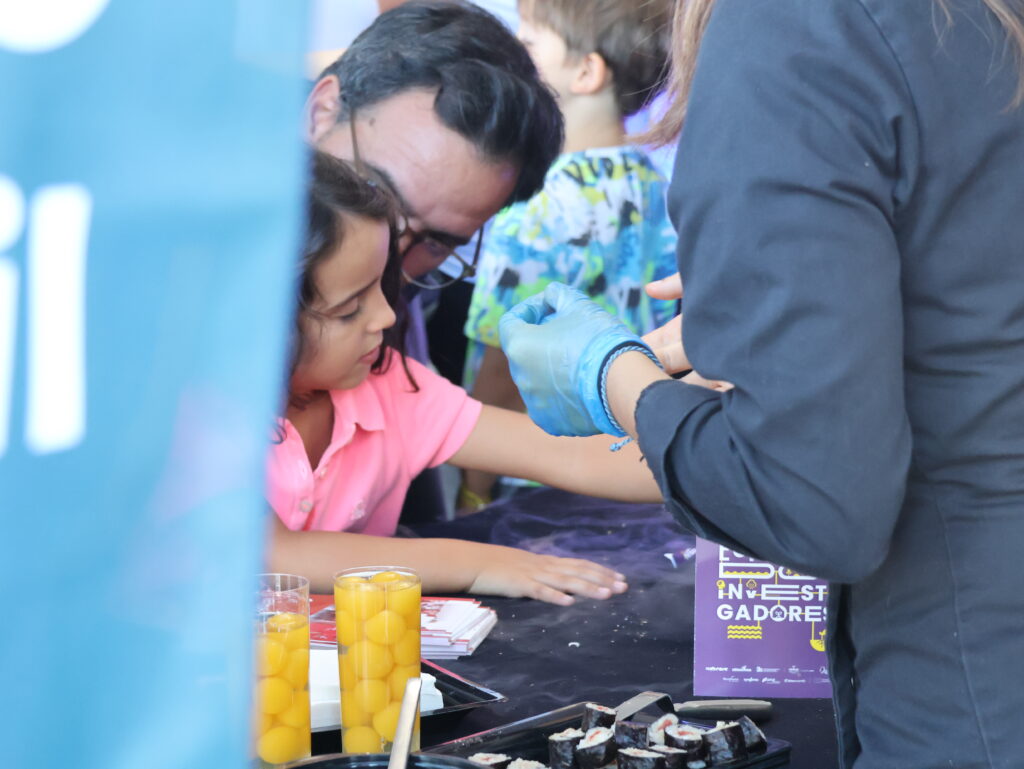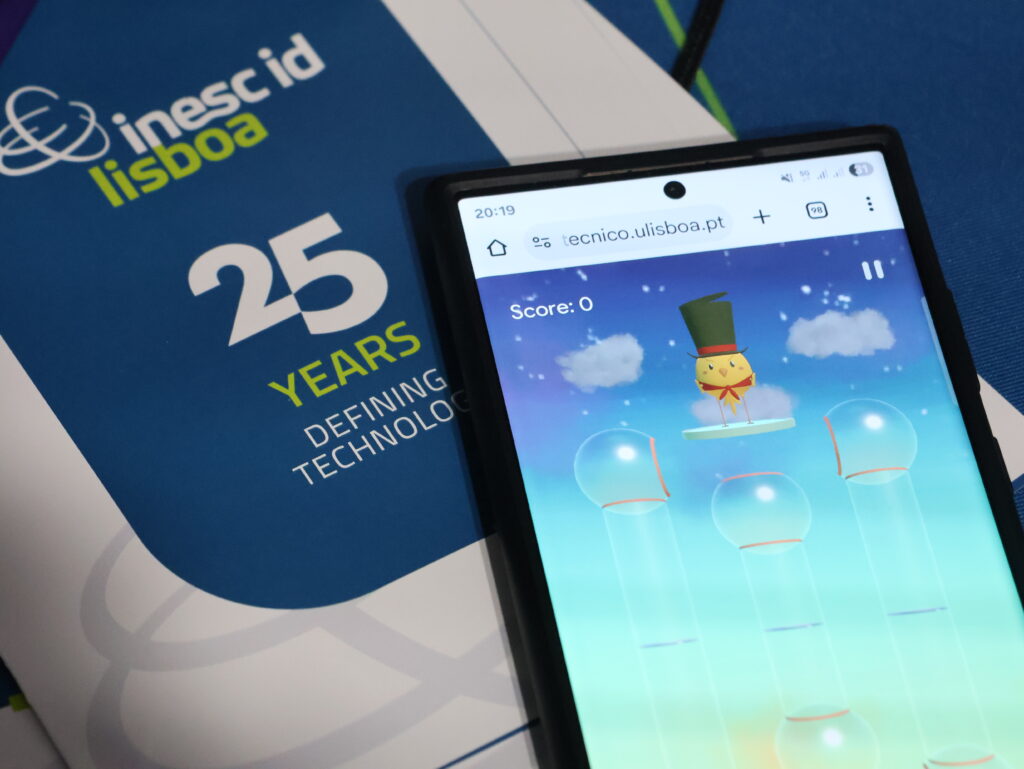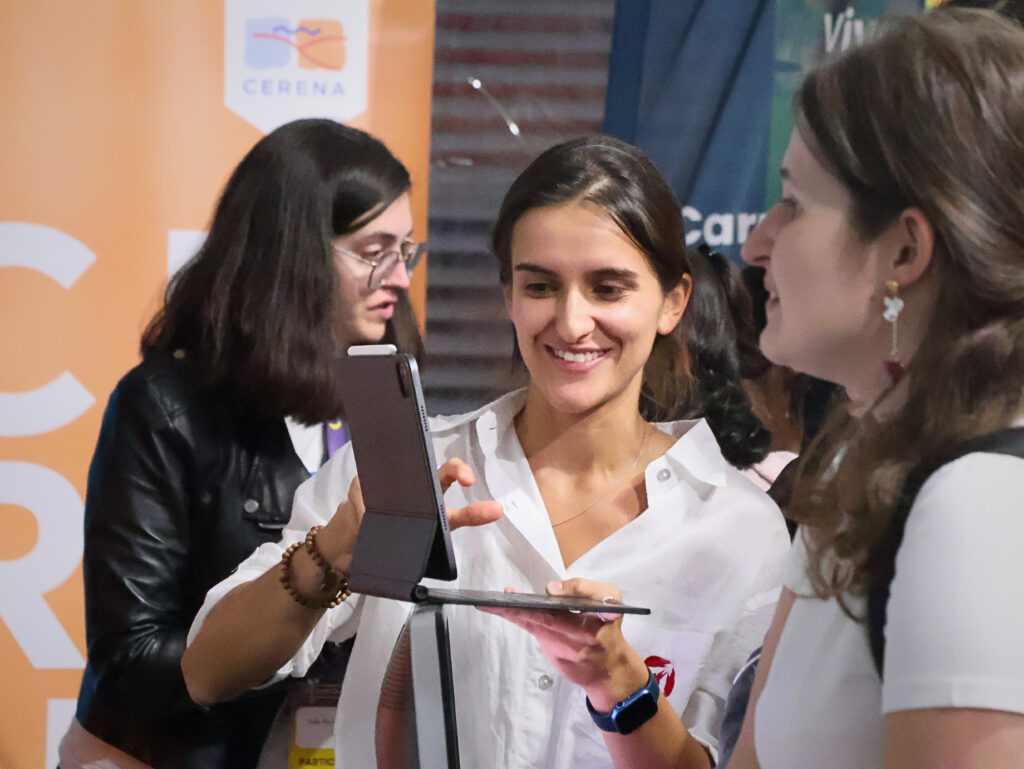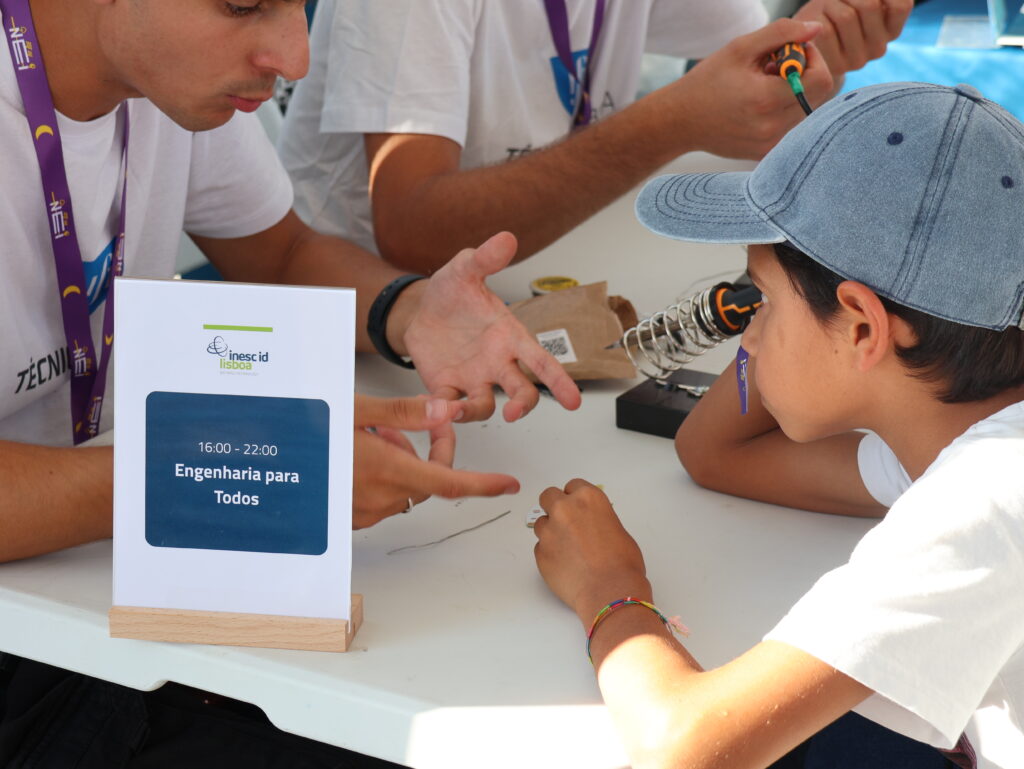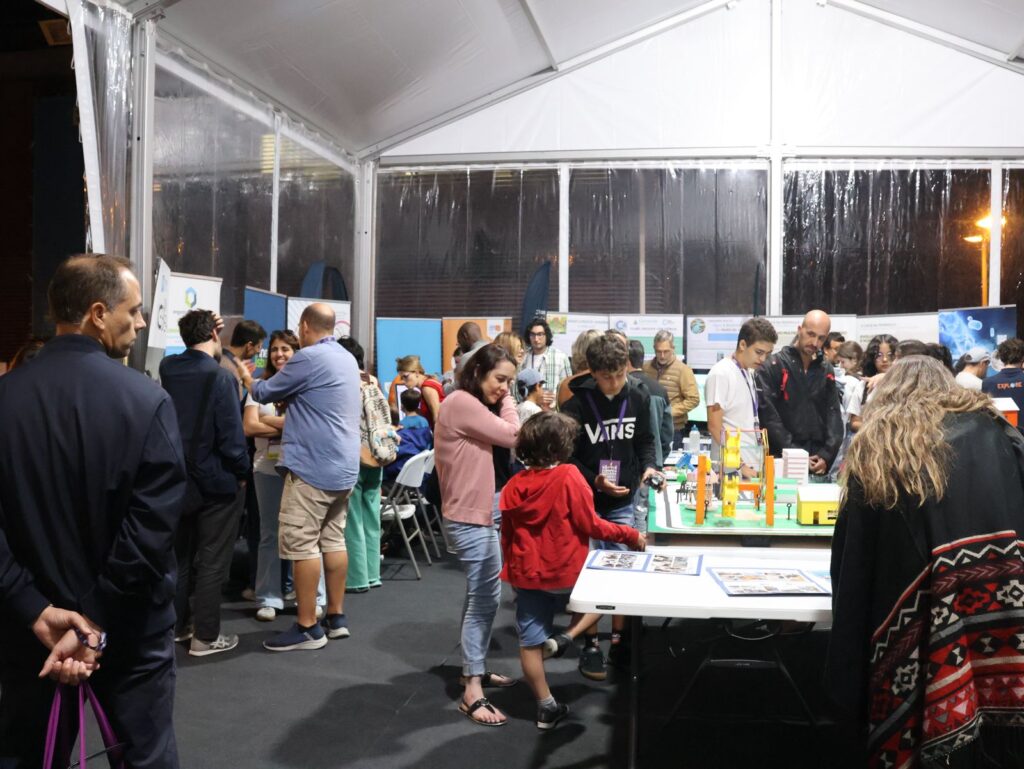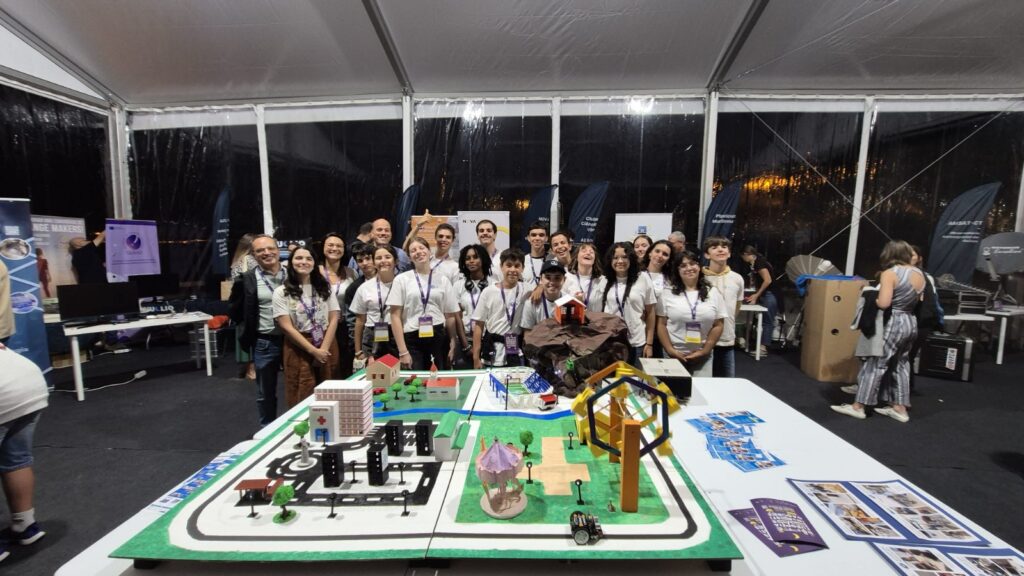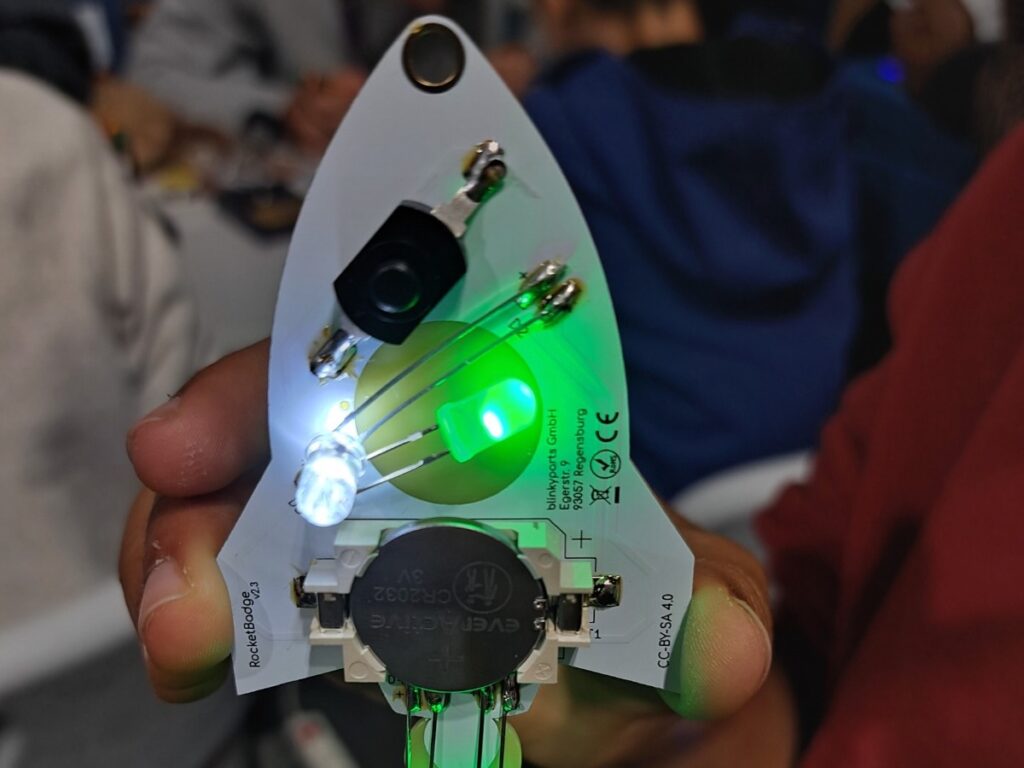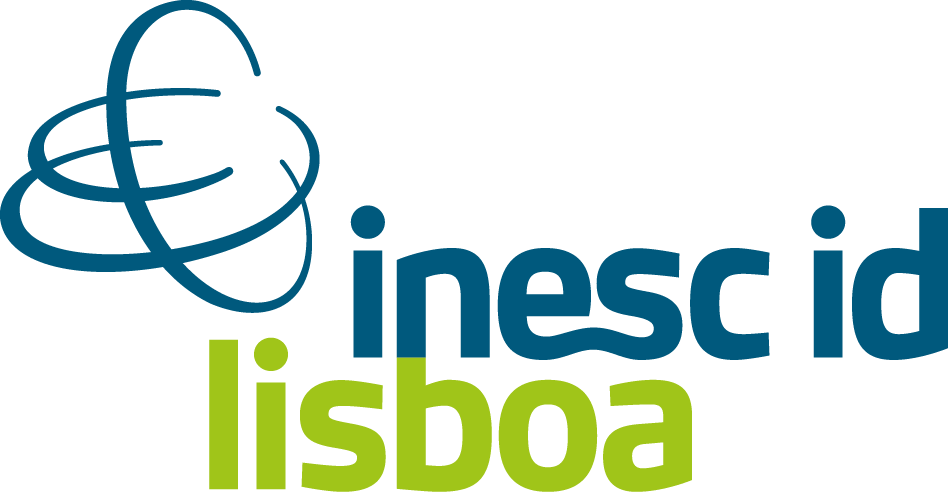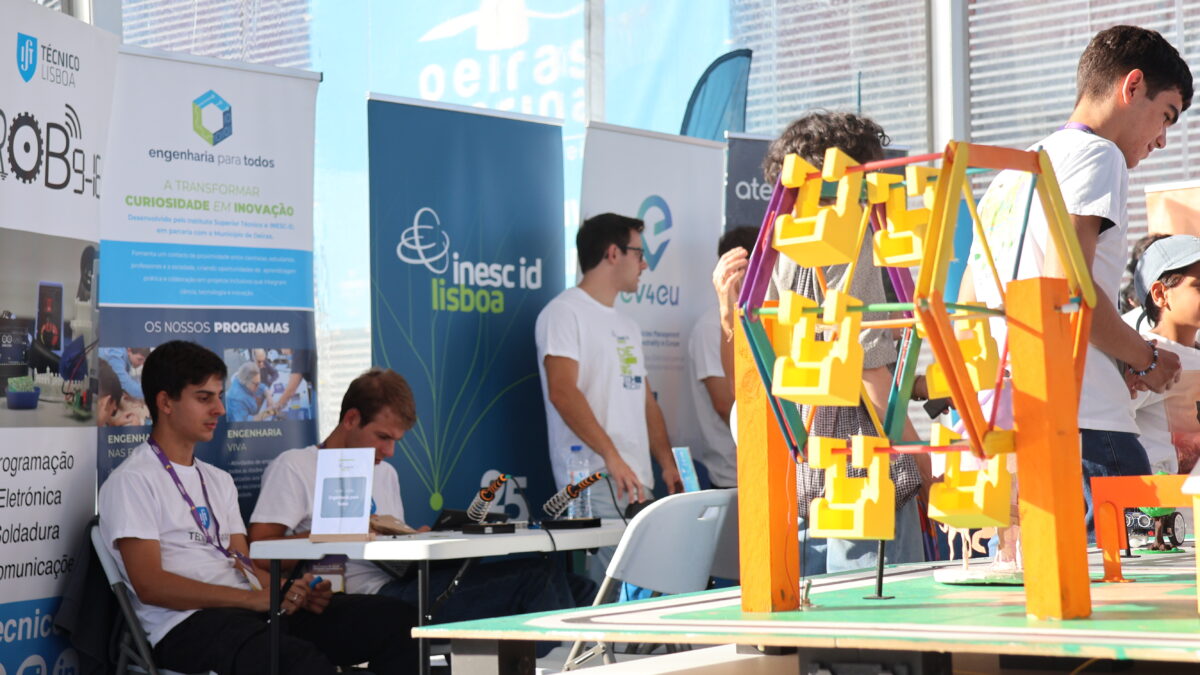
Image: INESC-ID booth at NEI2025 ( ©INESC-ID)
Rain or shine, INESC-ID brought science to the European Researchers’ Night
Not even the threat of tropical cyclone Gabrielle discouraged the hundreds of families and curious visitors who filled the Marina of Oeiras for another edition of the European Researchers’ Night (NEI). And last Friday, September 26, brought its reward: the announced storm turned into a perfect autumn afternoon and evening. Once again, the marina became a stage for live science, with more than 35 institutions, interactive experiments, games, conversations, and performances for all ages.
For the second year in a row, INESC-ID took part in the event with a sea-view booth – part of a series of science outreach efforts coordinated by the Communications and Outreach Office. We were in great company, alongside colleagues from CERENA (also part of the Instituto Superior Técnico associated institutes community) and several other institutions.
Exploring Electric Mobility
Starting the first shift of the day, our booth featured the EV4EU and Aliança para a Transição Energética (ATE) projects, the latter being a key pillar of Portugal’s Recovery and Resilience Plan (PRR). Students Guilherme Pereira and Marcelo Braço Forte, from the Sustainable Power Systems scientific area, led the activity with an interactive quiz, challenging visitors and offering the chance to win a mini electric vehicle kit.
Serious Games for Psoriatic Arthritis Rehabilitation
As the sun went down, the baton was passed to returning volunteers Bárbara Ramalho from Graphics and Interaction (HUMAN Lab) and Samuel Gomes from GAIPS, joined by newcomers Rodolfo Costa and Filipa Magalhães. Together, they showcased the latest version of the game iPROLEPSIS, inviting the public to play and respond to questionnaires while explaining how the tasks were designed to train movements often affected by psoriatic arthritis.
Engineering for Everyone
Our booth’s second table was dedicated to the Engenharia para Todos project – a joint initiative by INESC-ID and Instituto Superior Técnico, with support from the Oeiras Municipality. This project embodies the spirit of this year’s edition by actively engaging children, public schools, and local communities in hands-on science and technology. Presented by coordinator Maria João Verdasca, and scholarship students Afonso Gonçalves and Martim Jesus, dozens of children had the chance to learn how to solder electronic components to build mini rockets.
Right in front, students from the C4 Science Club at Agrupamento de Escolas de Carnaxide — who developed their Smart City project throughout the year with support from Engenharia para Todos — proudly presented their city, built from 3D modelling and printing to Arduino programming.
At the end of the night, with all booths already packed away, only one small future scientist remained, determined and focused, finishing the last soldering points on her rocket. We waited patiently, watching her with quiet satisfaction. Only then, in a moment of silent complicity, did we unplug the soldering iron and close our participation.
Held every year on the last Friday of September, the European Researchers’ Night brings science to the streets with hundreds of free events across Europe. This year’s edition in Oeiras, part of the EU-EMBRACES project, was coordinated by ITQB NOVA in partnership with the Oeiras Municipality.
—
Published by the INESC-ID Communications and Outreach Office
© 2025 INESC-ID. Credit INESC-ID, with a link to the original source, when sharing or adapting this article.
Images | © 2025 INESC-ID
